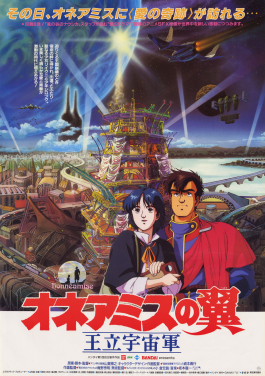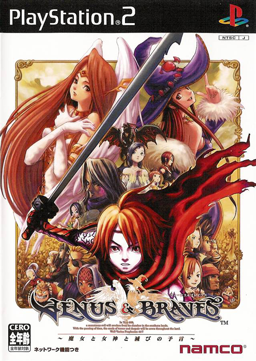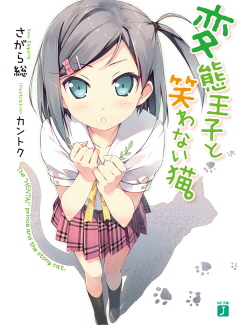
Spirited Away is a 2001 Japanese animated fantasy film written and directed by Hayao Miyazaki. Spirited Away tells the story of Chihiro "Sen" Ogino, a ten-year-old girl who, while moving to a new neighborhood, inadvertently enters the world of kami. After her parents are turned into pigs by the witch Yubaba, Chihiro takes a job working in Yubaba's bathhouse to find a way to free herself and her parents and return to the human world. The film was animated by Studio Ghibli for Tokuma Shoten, Nippon Television Network, Dentsu, Buena Vista Home Entertainment, Tohokushinsha Film, and Mitsubishi and distributed by Toho.

Royal Space Force: The Wings of Honnêamise is a 1987 Japanese animated science fiction film written and directed by Hiroyuki Yamaga, co-produced by Hiroaki Inoue and Hiroyuki Sueyoshi, and planned by Toshio Okada and Shigeru Watanabe, with music by Ryuichi Sakamoto. The story takes place in an alternate world where a disengaged young man, Shirotsugh, inspired by an idealistic woman, Riquinni, volunteers to become the first astronaut. The film was the debut by the studio Gainax, and the first anime produced by Bandai.

Dororo (どろろ) is a Japanese manga series written and illustrated by the manga artist Osamu Tezuka. Tezuka's childhood memory of his friends pronouncing dorobō as dororo inspired the title of the series. Dororo was first serialized in Shogakukan's Weekly Shōnen Sunday between August 1967 and July 1968, before being cancelled. The manga was then concluded in Akita Shoten's Bōken'ō magazine in 1969.

Ninpuu Sentai Hurricaneger is a Japanese Tokusatsu television show and Toei's twenty-sixth production of the Super Sentai metaseries. It aired from February 17, 2002, to February 9, 2003, replacing Hyakujuu Sentai Gaoranger, and was replaced by Bakuryū Sentai Abaranger. The catchphrase for the series is "Unknown even to others, unknown even to the world, we become shadows to defeat evil!". Its footage was used in the American series Power Rangers Ninja Storm. On April 1, 2013, Shun Shioya, Nao Nagasawa, Kohei Yamamoto, Yujiro Shirakawa, and Nobuo Kyo, who played Hurricane Red, Hurricane Blue, Hurricane Yellow, Kabuto Raijer, and Kuwaga Raijer, respectively, announced that a tenth-anniversary V-Cinema release called Ninpu Sentai Hurricaneger: 10 Years After would be produced. This is the first time a movie has been made commemorating the anniversary of a single Sentai series. The movie is a direct to DVD and Blu-ray release. Shout! Factory released Ninpu Sentai Hurricaneger: The Complete Series in North America on March 26, 2019. This is the twelfth Super Sentai series to be released in North America. It aired alongside Kamen Rider Ryuki.

Honey and Clover is a Japanese manga series written and illustrated by Chica Umino. It was serialized in Takarajimasha's shōjo manga magazine Cutie Comic from 2000 to 2001, before being transferred to Shueisha's josei manga magazines Young You (2001–2005) and Chorus (2005–2006); its chapters were collected in ten tankōbon volumes. The series depicts the lives and relationships of a group of art school students who live in the same apartment building.

Ushio & Tora is a Japanese manga series written and illustrated by Kazuhiro Fujita. It was serialized in Shogakukan's shōnen manga magazine Weekly Shōnen Sunday from January 1990 to October 1996, with its chapters collected in 33 tankōbon volumes. The series follows the adventures of a boy named Ushio Aotsuki, the son of a temple keeper, who after having reluctantly released the imprisoned powerful tiger-like monster, Tora, the two begin a journey together, fighting against supernatural beings threatening the world.

A Certain Magical Index is a Japanese light novel series written by Kazuma Kamachi and illustrated by Kiyotaka Haimura, which has been published by ASCII Media Works under their Dengeki Bunko imprint since April 2004 in a total of three separate series. The first ran from April 2004 to October 2010, the second from March 2011 to July 2019, and the third from February 2020 to present.

Spice and Wolf is a Japanese light novel series written by Isuna Hasekura and illustrated by Jū Ayakura. ASCII Media Works has published 24 volumes since February 2006 under their Dengeki Bunko imprint. ASCII Media Works has also published nine volumes of a spin-off light novel series titled Wolf and Parchment since September 2016.

Rosario + Vampire is a Japanese manga series written and illustrated by Akihisa Ikeda. The story revolves around Tsukune Aono, a boy who inadvertently enrolls in a boarding school for monsters. He quickly befriends Moka Akashiya, a vampire who soon develops an obsession with his blood, and later meets other monster girls who soon take a romantic liking to him. The manga was serialized in Shueisha's shōnen manga magazine Monthly Shonen Jump from April 2004 to June 2007, when the magazine ceased its publication. An extra chapter was published in Weekly Shōnen Jump in September 2007. The chapters were collected in ten tankōbon volumes.
Anime song is a genre of music originating from Japanese pop music. Anime songs consist of theme, insert, and image songs for anime, manga, video game, and audio drama CD series, as well as any other song released primarily for the anime market, including music from Japanese voice actors.

Class of Heroes is a role-playing video game dungeon crawler for the PlayStation Portable developed by Zero Div and published by Acquire in Japan and Atlus in North America. In Japan, the game was released on August 26, 2008; in North America, the game was released on June 9, 2009 by Atlus. In the game, players progress by navigating dungeons as hordes of enemies appear and attack in turn-based combat. Class of Heroes received mixed reviews from critics, with some appreciating the creative take on dungeon-crawling and others disliking the game's graphics and grind-based leveling system.

Venus & Braves: Majo to Megami to Horobi no Yogen is a tactical role-playing game developed by Namco for the PlayStation 2. A pseudo-sequel to the 2-dimensional RPG Seven: Cavalry Troop of Molmorth, it takes place in the same fantasy world. Venus & Braves includes both a single player mode and multiplayer PlayStation Network battles. The game's plot revolves around an immortal warrior named Blood Boal who is sent by a goddess to save the world from destruction in a hundred years' time. The story itself takes place during the ensuing century and beyond. The game was released exclusively in Japan on February 13, 2003.

The Okami-san series is a collection of Japanese light novels by Masashi Okita, with illustrations by Unaji. The series started with the release of the first volume in August 2006 titled Okami-san & her Seven Companions, and as of January 2011, 12 volumes have been published by ASCII Media Works under their Dengeki Bunko imprint. A manga adaptation by Kurumi Suzushiro started serialization in the April 2010 issue of ASCII Media Works' shōnen manga magazine Dengeki Daioh. A 12-episode anime adaptation by J.C.Staff aired in Japan on AT-X between July 1 and September 16, 2010, and has been licensed and dubbed into English by Funimation Entertainment to be aired on American network television and released to DVD. The English-dubbed version of the anime adaptation was subsequently licensed and distributed by Madman Entertainment and Manga Entertainment to Australia and the United Kingdom, respectively.

Oreshura (俺修羅), short for Ore no Kanojo to Osananajimi ga Shuraba Sugiru, is a Japanese light novel series written by Yūji Yūji, with illustrations provided by Ruroo. SoftBank Creative published eighteen main novels and one extra from February 2011 to February 2022. There have been four manga adaptations and an anime adaptation by A-1 Pictures aired from January to March 2013.

Love, Election and Chocolate, abbreviated as Koichoco (恋チョコ), is a Japanese eroge visual novel developed by Sprite, which was released in Japan on October 29, 2010 for Windows PCs and later ported to the PlayStation Portable on September 27, 2012. The gameplay in Love, Election and Chocolate follows a branching plot line, which offers pre-determined scenarios with courses of interaction, and focuses on the appeal of the five female main characters by the player character. There have been two manga adaptations serialized in ASCII Media Works' Dengeki G's Magazine and Dengeki Daioh. A 12-episode anime television series adaptation produced by AIC Build and directed by Tōru Kitahata aired between July and September 2012, with an additional episode released on the series' final Blu-ray Disc and DVD volume in March 2013.

The "Hentai" Prince and the Stony Cat, also known by the shorthand HenNeko (変猫。) and Towanai (とわない), is a Japanese light novel series written by Sou Sagara and illustrated by Kantoku. Media Factory published 13 volumes from October 2010 to March 2019. It was adapted into a manga series serialized in Monthly Comic Alive and a 12-episode anime television series by J.C.Staff, which aired from April to June 2013. The anime is licensed by Sentai Filmworks in North America.

Lord Marksman and Vanadis is a Japanese light novel series written by Tsukasa Kawaguchi and illustrated by Yoshi☆o and Hinata Katagiri. In Lord Marksman and Vanadis, the fictional European country of Brune is under the leadership of King Faron. Brune is on the brink of civil war due to Faron's deteriorating health and a power struggle between the kingdom's two heirs. Zhcted, Brune's longtime rival, dispatches Leitmeritz war maiden Eleonora Viltaria to attack Brune. After capturing the Brunish nobleman Tigrevurmud Vorn, Elen must help restore peace and order to Brune.

Anpanman (アンパンマン) is a Japanese children's superhero picture book series written by Takashi Yanase, running from 1973 until the author's death in 2013. The series has been adapted into an anime entitled Soreike! Anpanman, which is one of the most popular anime series among young children in Japan. The series follows the adventures of Anpanman, a superhero with an anpan for a head, who protects the world from an evil anthropomorphic germ named Baikinman.

"Itoshisa to Setsunasa to Kokoro Zuyosa to" is the fourth single by Japanese singer Ryōko Shinohara, released on July 21, 1994, by Epic Records/Sony Music Entertainment Japan under the Tokyo Performance Doll label Cha-Dance. Written and produced by Tetsuya Komuro, the song was used in the Japanese release of the 1994 anime film Street Fighter II: The Animated Movie during the scene where Ryu and Ken Masters team up to fight Vega/M. Bison. The B-side is "Good Luck", which was also featured in the film as the ending theme. An instrumental version of the song plays in the secret "Dramatic Battle" mode in Street Fighter Alpha, which also involves a team battle in which Ryu and Ken face Bison at the same time.


















